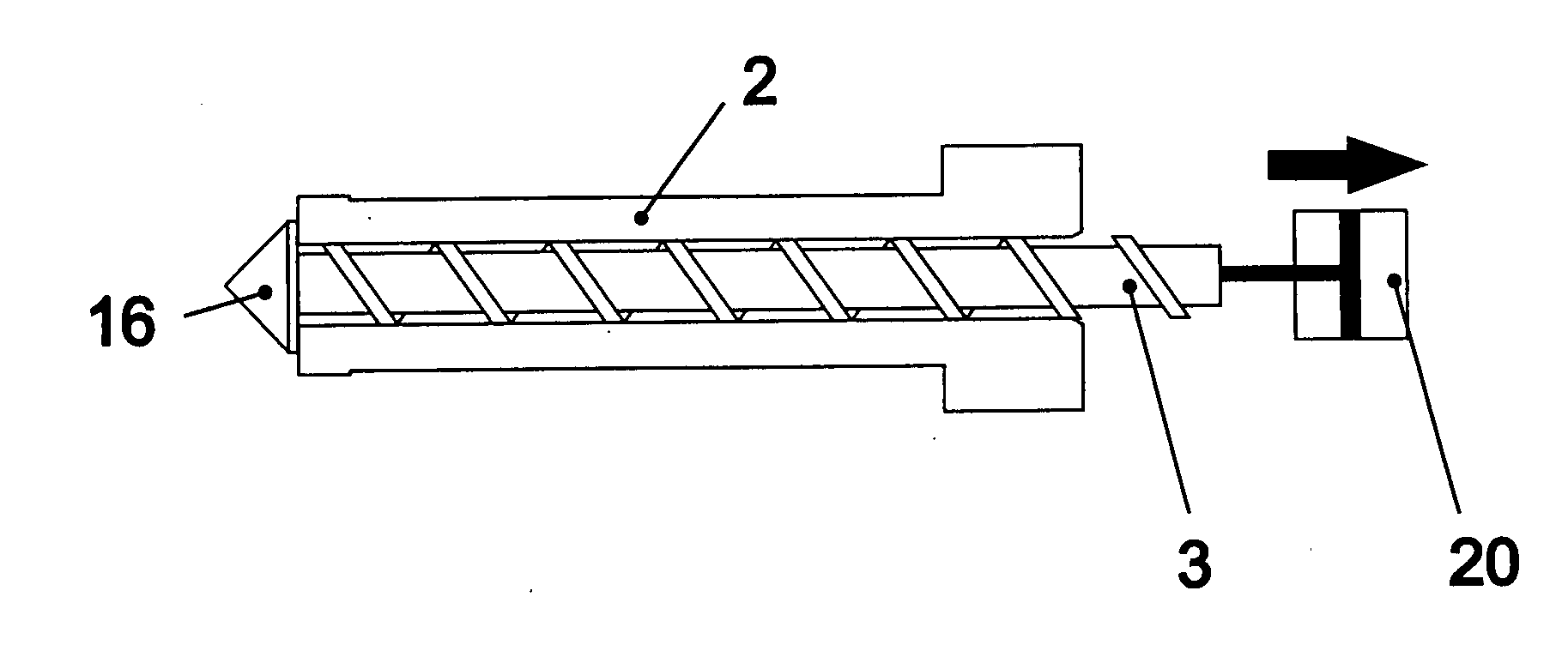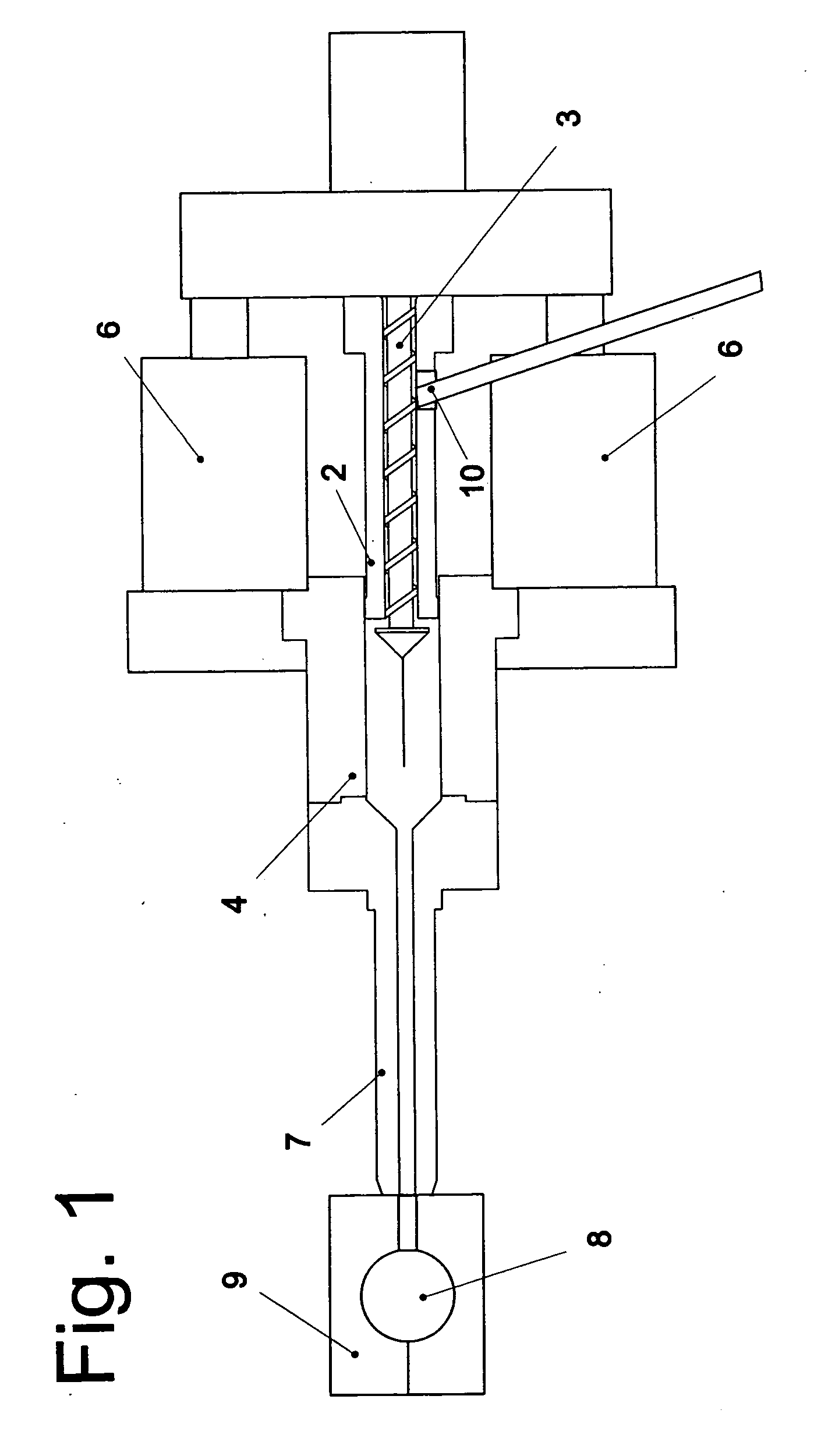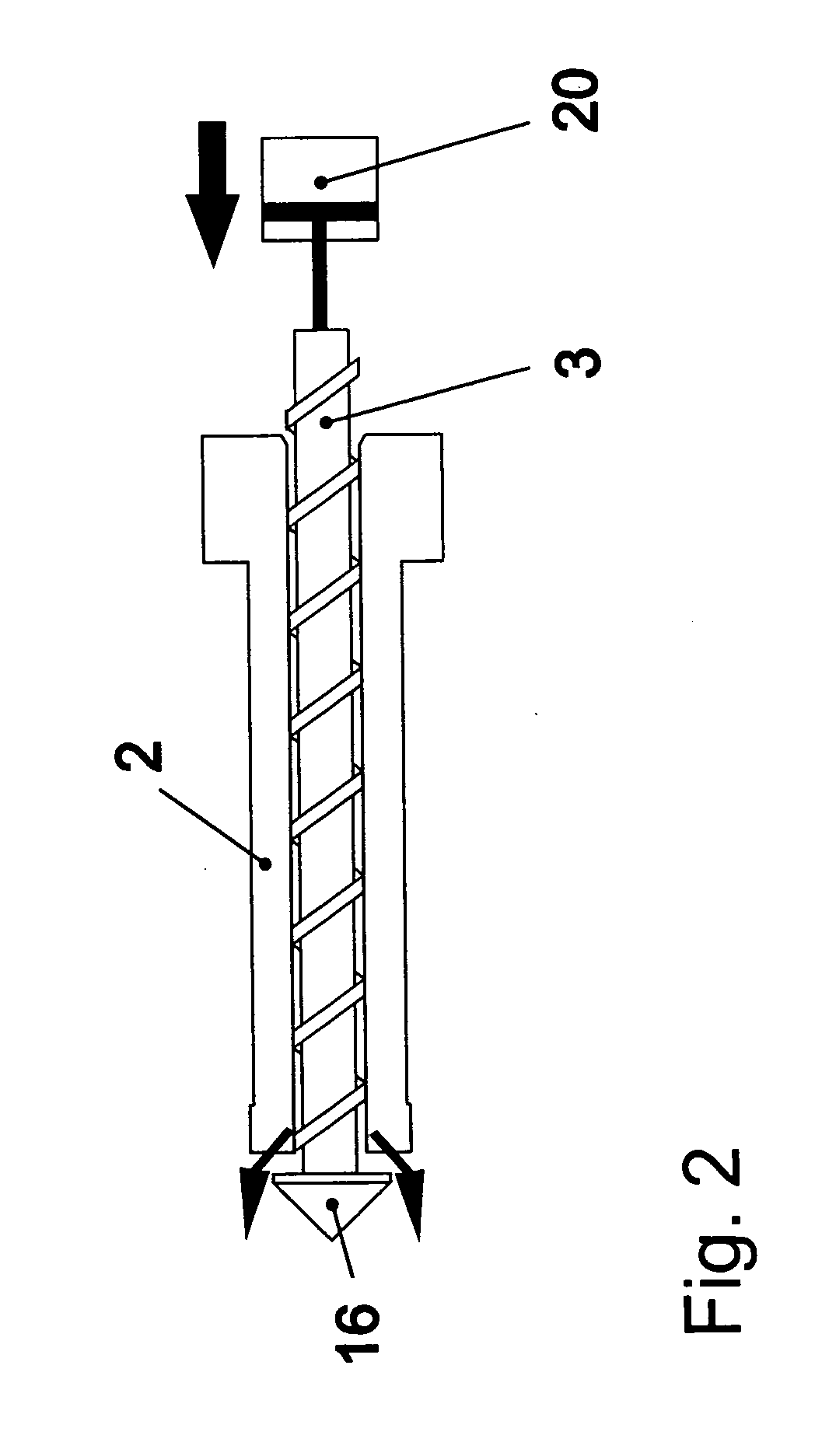Plastification and injection unit with back-flow barrier
a backflow barrier and injection unit technology, applied in the field of plastification and injection units, can solve the problems of unavoidable disassembly of cleaning in the case of conventional constructions, relative complexity of structure, and inability to clean injection units, etc., to achieve fast external activation, reduce cleaning effort, and simple structure
- Summary
- Abstract
- Description
- Claims
- Application Information
AI Technical Summary
Benefits of technology
Problems solved by technology
Method used
Image
Examples
Embodiment Construction
[0021]FIG. 1 shows a plastification and injection unit generally indicated with the reference symbol 1. Unit 1 consists essentially of a plastification screw 3 disposed in a screw cylinder 2 so as to rotate. Screw cylinder 2 serves as an injection piston for the mass plasticized by screw 3, which is pressed into the injection cylinder using the so-called FIFO method (first in-first out). When injection cylinder 4 is filled, screw cylinder 2 is moved into injection cylinder 4 by means of hydraulic cylinders 6, thereby pressing the plasticized mass out of the injection cylinder into cavity 8 of an injection-molding die 9, by way of nozzle 7.
[0022]The number 10 refers to the intake shaft in the screw cylinder for the material (rubber) to be plasticized.
[0023]In the prior art according to FIGS. 4 to 6, the screw cylinder is structured in multiple parts. It consists of the actual cylinder for accommodating the screw and a region referred to as the back-flow barrier 11. Back-flow barrier ...
PUM
| Property | Measurement | Unit |
|---|---|---|
| axial displacement | aaaaa | aaaaa |
| pressure | aaaaa | aaaaa |
| mass pressure | aaaaa | aaaaa |
Abstract
Description
Claims
Application Information
 Login to View More
Login to View More - R&D
- Intellectual Property
- Life Sciences
- Materials
- Tech Scout
- Unparalleled Data Quality
- Higher Quality Content
- 60% Fewer Hallucinations
Browse by: Latest US Patents, China's latest patents, Technical Efficacy Thesaurus, Application Domain, Technology Topic, Popular Technical Reports.
© 2025 PatSnap. All rights reserved.Legal|Privacy policy|Modern Slavery Act Transparency Statement|Sitemap|About US| Contact US: help@patsnap.com



